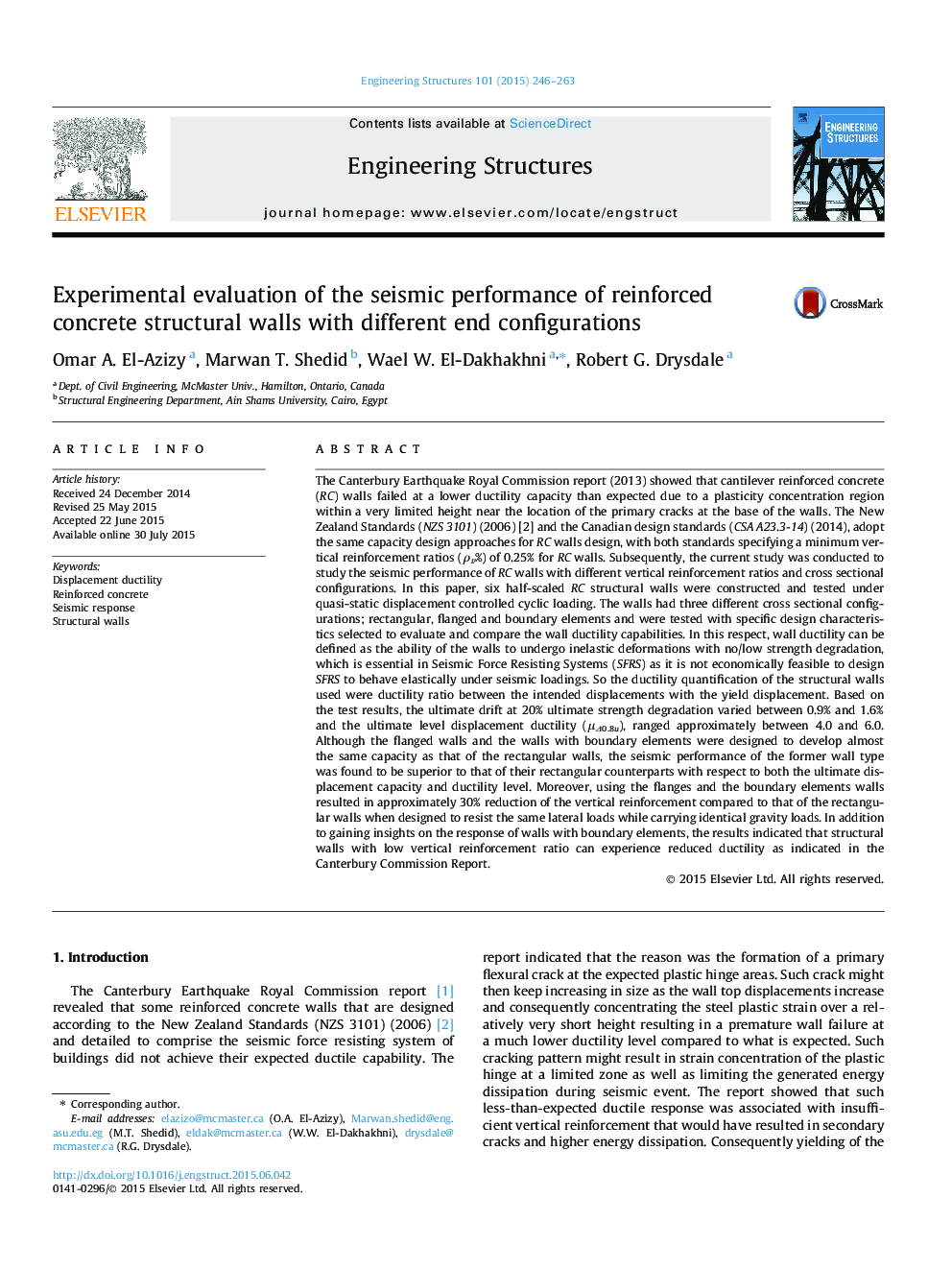| Article ID | Journal | Published Year | Pages | File Type |
|---|---|---|---|---|
| 266041 | Engineering Structures | 2015 | 18 Pages |
•The Canterbury Earthquake Royal Commission report findings.•Failure of cantilever reinforced concrete walls at a lower ductility capacity than expected.•Seismic performance of reinforced concrete walls with different reinforcement ratios and cross sections.•Walls with rectangular, flanged and boundary element cross sectional configurations.
The Canterbury Earthquake Royal Commission report (2013) showed that cantilever reinforced concrete (RC) walls failed at a lower ductility capacity than expected due to a plasticity concentration region within a very limited height near the location of the primary cracks at the base of the walls. The New Zealand Standards (NZS 3101) (2006) [2] and the Canadian design standards (CSA A23.3-14) (2014), adopt the same capacity design approaches for RC walls design, with both standards specifying a minimum vertical reinforcement ratios (ρv%) of 0.25% for RC walls. Subsequently, the current study was conducted to study the seismic performance of RC walls with different vertical reinforcement ratios and cross sectional configurations. In this paper, six half-scaled RC structural walls were constructed and tested under quasi-static displacement controlled cyclic loading. The walls had three different cross sectional configurations; rectangular, flanged and boundary elements and were tested with specific design characteristics selected to evaluate and compare the wall ductility capabilities. In this respect, wall ductility can be defined as the ability of the walls to undergo inelastic deformations with no/low strength degradation, which is essential in Seismic Force Resisting Systems (SFRS) as it is not economically feasible to design SFRS to behave elastically under seismic loadings. So the ductility quantification of the structural walls used were ductility ratio between the intended displacements with the yield displacement. Based on the test results, the ultimate drift at 20% ultimate strength degradation varied between 0.9% and 1.6% and the ultimate level displacement ductility (μΔ0.8u), ranged approximately between 4.0 and 6.0. Although the flanged walls and the walls with boundary elements were designed to develop almost the same capacity as that of the rectangular walls, the seismic performance of the former wall type was found to be superior to that of their rectangular counterparts with respect to both the ultimate displacement capacity and ductility level. Moreover, using the flanges and the boundary elements walls resulted in approximately 30% reduction of the vertical reinforcement compared to that of the rectangular walls when designed to resist the same lateral loads while carrying identical gravity loads. In addition to gaining insights on the response of walls with boundary elements, the results indicated that structural walls with low vertical reinforcement ratio can experience reduced ductility as indicated in the Canterbury Commission Report.
